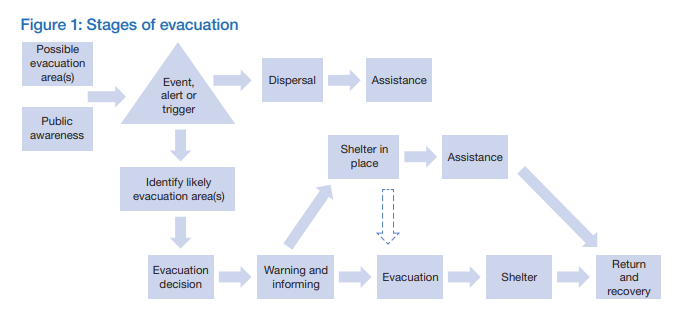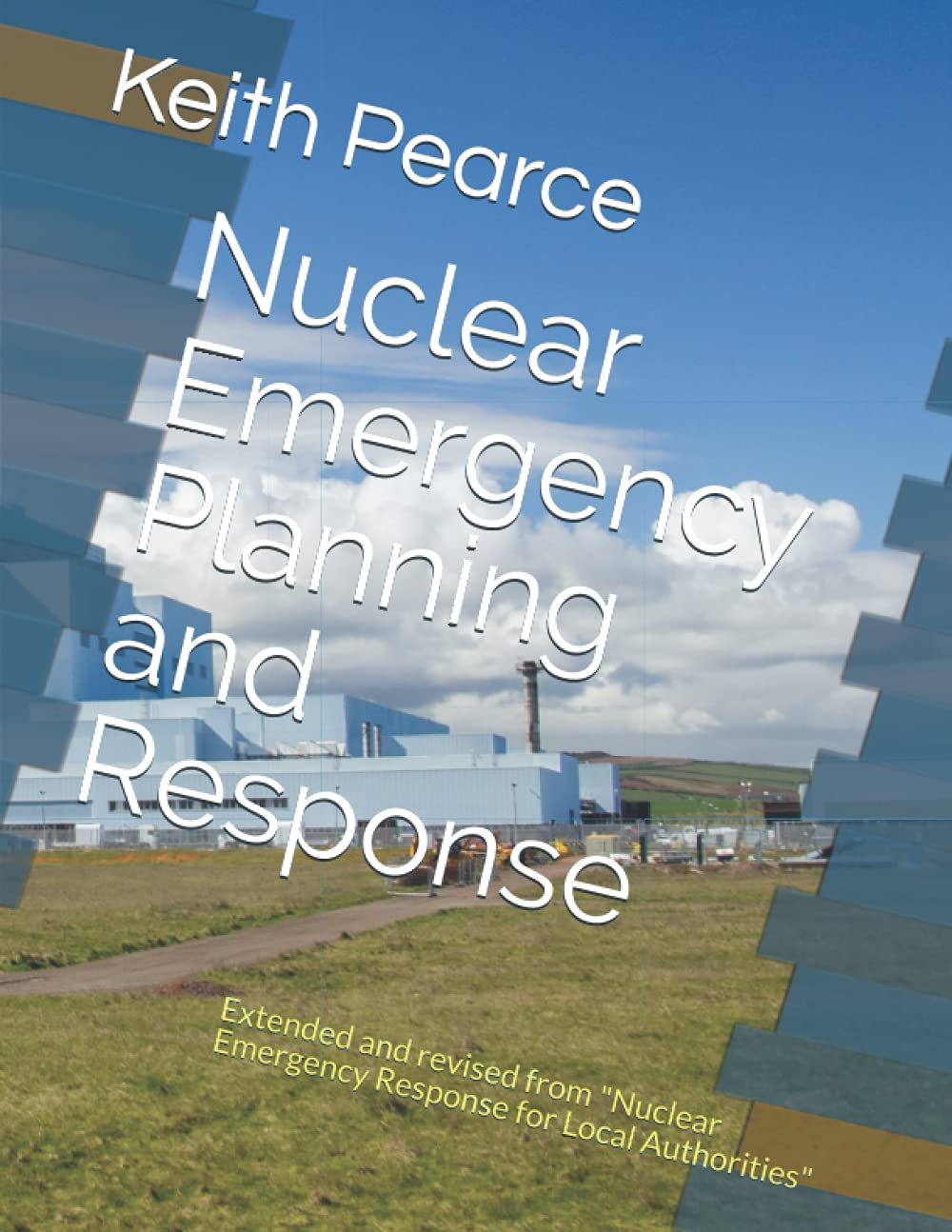Evacuation
Evacuation, in this context, means ''the act of moving people from a dangerous place to somewhere safe''.
What happens depends on the situation; whether you are in a crowded public space or in your home or place of work, what the incident is and how long it is expected to last. To learn about the planning for the evacuation of crowded spaces see HM Government Guidance Evacuation, invacuation, lockdown, protected spaces
Evacuation of areas around a licensed site
Evacuation is not a planned automatic response at many sites in the UK, and then only for those nearest the site and in the event of a serious event. At many sites you are much more likely to be advised to evacuate for a flooding alert. It is, however, worth considering what it might entail.
The lower and upper Emergency Reference Levels (ERLs) for evacuation are 30 mSv and 300 mSv PHE-CRCE-049, compared to 3 mSv and 30 mSv for shelter. This is because of the additional costs of evacuation in terms of disruption of life.
PHE state that 'Evacuation is very effective for protecting small communities, provided it is implemented before a release occurs and has been well planned. For large numbers of people or without prior planning, evacuation can lead to serious physical and psychological health risks, including fatalities.
The Torness Off-site Plan states that The affected population may be evacuated in order to avoid (or potentially to avoid) relatively high short-term exposures. The important thing here is that evacuation is expected to be short term with people returning to their homes and work places after the plume has passed (and maybe after some environmental monitoring has taken place).
Relocation, where people are permanently moved to a new area, is much less likely. If this were to occur, people would probably be allowed into their homes and
places of work under controlled conditions to recover valuables.
Prepare for Evacuation
As usual American web-sites give more information on how to prepare for evacuation, See for example the Ready website.
The Sizewell B prior information, gives the following check list:
- Get together the people and pets in your household (excluding children in school);
- Pack a supply of warm clothing;
- Pack any special food that anyone in your family needs;
- Pack any medicines that anyone in your family needs;
- Take your Stable Iodine tablets with you if evacuated;
- Take personal documents and valuables;
- Pack some books and toys for children;
- Make sure all naked flames including candles and/or fires are extinguished. Makes sure that cookers, ventilation fans, TVs and other electrical appliances etc, are turned off and unplugged;
- Lock up your property;
- Leave using your own transport, keeping windows and ventilation closed. Arrangements will be made for people without their own transport;
- Go to the rest centre or any other centre designated or to a suitable destination of your choosing provided it is outside the evacuation area - but please inform the police of your location (registration cards will probably be provided);
(I'm not sure what "valuables" you would want to take to a reception centre with you rather than leave in your locked home. I'd also suggest that chargers for phones etc were packed.)
(See also the South Gloucestershire Council advise leaflet South Gloucestershire Council Preparing for Evacuation ).
Evacuation Alert
If the local Strategic Command decide to recommend evacuation those in the affected area will be alerted by local radio, local authority social media or by telephone (possibly all three).
The message may be something like that in the Torness off-site plan:
“An incident has occurred at ■■■■■■■■ Power Station and has resulted in a leakage of radiation that is affecting the sector in which you live. As a precautionary measure we are
evacuating the sector in which your property is located. Please ensure you have taken your potassium iodate tablets and then make your way to the Reception
Centre which has been established at ■■■■■■■■ and/or ■■■■■■■■. Should you wish to use an alternative location please inform the Police at the Evacuation Point.
If you do not have any means of transport please contact Police Scotland on the following number ■■■■■■■■”
Local Evacuation Plans

Government evacuation planning guidance states that "An evacuation should only be carried out if the benefit of leaving an area significantly outweighs the risk of sheltering in place ... The over-riding priority must be the safety of the public. Evacuation should not be assumed to be the best option for all risks, and it may not be the safest. Buildings offer significant protection against most risks, and immediate shelter may be safer for the public, at least initially".
Local authorities are more likely to have a generic evacuation plan ready to be used in a variety of circumstances such as flood or release of hazardous materials as well as radiological and other industrial accidents. These plans will be the result of multi-agency planning based on a local risk assessment and the pooling of their knowledge, experience and capabilities.
The decision to evacuate areas before, during or after a radiological release will be made in the Strategic Coordination Centre (SCC) based on advice from the Operator, the UK Health Security Agency and the STAC and SAGE groups of advisors who will consider the possible future evolution of the event and the dose that would be potentially avertable by shelter and by evacuation.
The evacuation may be phased, with those most at risk (generally those closer to the event and downwind based on the weather forecast) being moved first or there may be a wait for the most appropriate time to move people based on predicted variations in the release rate. Prior to evacuation people would probably be advised to remain in shelter (it reduces the radiation dose and puts them next to a radio or phone through which advice can be channelled).
Individuals and families would have the choice of using their own transport and using transport provided by he local authorities depending on their circumstances and the event.
Individuals and families would also have the choice of going to council run accommodation or making their own arrangements although all will be asked to register with the authorities and provide destination and contact details.
Books by Keith Pearce (Creator of this web-site) - Consultant Emergency Planner and Author
Nuclear Emergency Planning and Response
How to survive a nuclear emergency
The Physics of the Chernobyl accident
As an Amazon Associate I earn from qualifying purchases.


